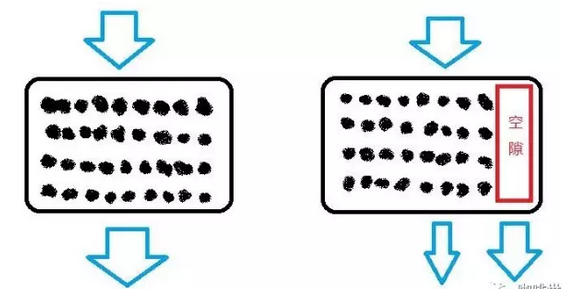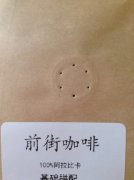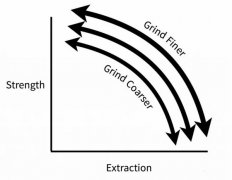Channel effect? On the Channel effect in Coffee extraction
Today, I'm going to talk about the channel effect. when I first learned about the channel effect, it was not long before I made coffee, and the coffee powder could not be well distributed in the powder bowl. My teacher often told me that your coffee has a "channel". At that time, just according to the gourd painting ladle to figure out some superficial things, what is the difference between them, is with the continuous learning to realize.
So what exactly is the channel effect?

Because water is inert, it will choose the path with the least resistance when it passes through the coffee powder.
Espresso1: its coffee powder is evenly arranged, and it can be evenly extracted by water when it is extracted by a coffee machine.
There are gaps in the arrangement of espresso2 coffee powder. When extracted by a coffee machine, water will choose to pass through more empty places, while coffee powder in some places will not be extracted by water, resulting in excessive extraction of some blocks with more water and insufficient extraction with less water.
Q: so what is the cause of the gap in espresso?
Bean grinder: bean grinder due to the grinding uniformity / shape is too low so that the coffee powder can not be very well together, there are large and small coffee powder.
2. The process of powder distribution: some of the processes will also cause channels. For example, there are obvious holes in the surface, or after filling and pressing, it is found that there is not enough powder to continue to add powder, and so on. All these will cause the uniformity of pressed powder to become lower and form a channel.
Q: but does the channel effect only occur in espresso?
A: in fact, we are also prone to channel effect during hand flushing, such as injecting water to the edge of the border between filter paper and coffee, causing the injected water to flow directly through the filter paper to the sharing pot after passing through the coffee. or in the water injection circle when there is no uniform circle, the injection point is on one side, will also lead to the occurrence of the channel.
There is a significant difference in flavor between the coffee extracted by the channel effect and the coffee extracted normally, and the channel effect still needs to be avoided by ourselves in our daily work.
Important Notice :
前街咖啡 FrontStreet Coffee has moved to new addredd:
FrontStreet Coffee Address: 315,Donghua East Road,GuangZhou
Tel:020 38364473
- Prev

The exhaust valve on the coffee bean bag is standard. Why can't you smell the coffee from the valve?
The small hole in the coffee bean bag is an one-way exhaust valve, because after baking coffee beans, it will release carbon dioxide, if you do not install an one-way exhaust valve, it will cause an inflated bag, or even cause an explosion bag, the one-way exhaust valve oxygen can not enter the inner bag, and excess gas can be discharged through it.
- Next

Barista skills: making Italian concentration time & grindness and Italian concentrated extraction
Time is the third most important element in the production of espresso. Here time refers to the extraction time, that is, from pressing the extraction key to pressing the stop extraction key. It also determines the success or failure of a cup of concentrate. If you use 20 grams of coffee powder to produce 50 grams of liquid, but you only use 10 seconds, then maybe this cup of concentrated will not taste very good. Now it takes between 22 and 40 seconds to extract and concentrate, and most of it
Related
- Beginners will see the "Coffee pull flower" guide!
- What is the difference between ice blog purified milk and ordinary milk coffee?
- Why is the Philippines the largest producer of crops in Liberia?
- For coffee extraction, should the fine powder be retained?
- How does extracted espresso fill pressed powder? How much strength does it take to press the powder?
- How to make jasmine cold extract coffee? Is the jasmine + latte good?
- Will this little toy really make the coffee taste better? How does Lily Drip affect coffee extraction?
- Will the action of slapping the filter cup also affect coffee extraction?
- What's the difference between powder-to-water ratio and powder-to-liquid ratio?
- What is the Ethiopian local species? What does it have to do with Heirloom native species?

